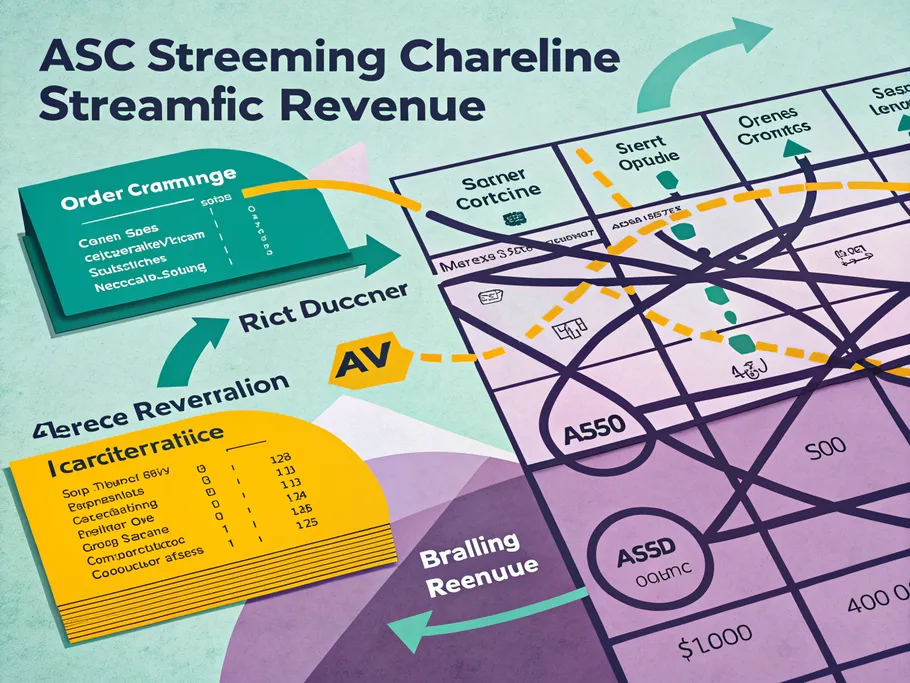Alright, let’s dive into the world of revenue—the lifeblood that keeps your business humming, the investors grinning, and your entrepreneurial dreams afloat. But before you start counting your chickens (or dollars) before they hatch, let’s chat about when you actually get to recognize those sweet earnings on your financial statements.
That’s where the GAAP for revenue recognition struts onto the stage. Think of it as the accounting rulebook that tells you when to pop the champagne—or at least when to update your spreadsheets. It’s the set of guidelines that determine how and when revenue should be recognized in your books.
Revenue, simply put, is the money your company earns by providing goods and services to customers during a financial period. Recognizing revenue means officially recording it on your income statement, signaling to the world (and yes, the taxman) that you’ve earned that moolah.
But hold your horses—it’s not always as straightforward as making a sale and seeing cash roll in. What happens when you get paid upfront for a service you’ll deliver later? Or when a project stretches over multiple accounting periods? Don’t sweat it; we’re here to break it all down.
In this article, we’ll venture into the nitty-gritty of US GAAP for revenue recognition and its trusty sidekick, ASC 606. Consider this your cheat sheet to mastering the rules of the accounting game, so you can focus on what really matters—growing your empire and keeping your sanity intact.
US GAAP Revenue Recognition Explained
Let’s be honest—revenue isn’t just a vanity metric to make your business look good. It’s a big deal. It drives your entire financial statement and is a major factor in assessing your company’s performance. Mess it up, and your financials become as reliable as a fortune teller’s crystal ball.
Under US GAAP (that’s Generally Accepted Accounting Principles for the uninitiated), revenue gets recognized when it’s both realized and earned. Notice we didn’t say “when the cash hits your bank account.” That’s because GAAP uses accrual accounting, which means you record revenue when you’ve actually delivered the goods or services, not necessarily when you get paid.
Think of it like this: if you sell a custom gaming PC and the customer pays in advance, you can’t recognize that revenue until you’ve built and delivered that pixel-pushing beast. No shortcuts, no exceptions.

This approach is crucial for a couple of reasons:
- Consistency is key: Without standard rules, comparing financial statements between companies would be like comparing apples to… pineapples. GAAP ensures everyone plays by the same rules, making your financial statements comparable and less of a headache for analysts.
- Matching principle: This accounting BFF of revenue recognition says you should record expenses in the same period as the revenues they help generate. It’s all about keeping things balanced, like a perfectly crafted latte.
By adhering to these principles, your financial statements paint an accurate picture of your company’s performance. And who doesn’t want that?
Accounting Standards Codification (ASC) 606
Meet the Beyoncé of revenue recognition standards: ASC 606. This superstar standard didn’t just enter the scene quietly—it made a grand entrance to bring harmony to the revenue recognition chaos.
On May 28, 2014, the Financial Accounting Standards Board (FASB) and the International Accounting Standards Board (IASB) issued converged guidance on revenue from contracts with customers. This guidance, known as Accounting Standards Update (ASU) 2014-09, replaced the tangled web of industry-specific GAAP revenue recognition requirements. Enter ASC Topic 606: Revenue from Contracts with Customers.
ASC 606 supersedes the old guidance in Topic 605 (ASC 605), which was about as organized as a sock drawer after laundry day. The new standard is more transparent and industry-neutral, promoting consistency across the board. It’s like moving from a patchwork quilt of rules to a sleek, one-size-fits-all approach.
Key Highlights of ASC 606:
- Transparency: Improved comparability of financial statements with standardized revenue recognition practices across industries.
- Unified Framework: Provides a uniform system for recognizing revenue from contracts with customers.
- Effective Dates: Public entities adopted it for annual reporting periods beginning after December 15, 2017, while non-public companies had an extra year to catch up.
The core principle of ASC 606 is straightforward (well, as straightforward as accounting standards get):
Recognize revenue to depict the transfer of promised goods or services to customers in an amount that reflects the consideration you expect to be entitled to in exchange for those goods or services.

In other words, show the money when you’ve earned it and can reasonably expect to get paid.
To achieve this, ASC 606 lays out a five-step model:
- Identify the contract with a customer.
- Identify the performance obligations (promises) in the contract.
- Determine the transaction price.
- Allocate the transaction price to the performance obligations.
- Recognize revenue when (or as) you satisfy a performance obligation.
Think of it as your handy roadmap to revenue recognition glory.
What’s the Big Deal About ASC 606?
The main difference between ASC 606 and the old ASC 605 is the emphasis on detailed disclosures and transparency. Under ASC 606, companies need to:
- Disclose separate revenue streams: No more lumping everything into one mysterious number.
- Connect contract liabilities to revenue: If you had a contract liability at the beginning of the period that turned into revenue by the end, you need to show how that magic happened.
- Share qualitative data: Discuss performance obligations and other insights that help users understand your revenue recognition practices.
In short, ASC 606 wants you to show your work, not just the final answer.
Curious to know more about related topics? Check out our article on Statement of Retained Earnings GAAP vs IFRS: Differences and Similarities.
When to Recognize Revenue Under GAAP
So, when do you get to officially say, “Show me the money”? According to the GAAP revenue recognition principle, revenue is recognized when it’s both realized and earned. Translation: when you’ve delivered the goods or services to your customer, regardless of when the cash lands in your account.
In the business world, cash flow can be as unpredictable as a cat in a room full of rocking chairs. Sometimes you get paid before you deliver; other times, cash rolls in afterward. To keep things orderly, GAAP uses two types of accounts:
- Accrued Revenue: When you’ve delivered goods or services but haven’t received payment yet. Think of it as an IOU from your customer.
- Deferred Revenue: When you’ve been paid in advance but haven’t delivered the goods or services yet. This is like holding a ticket to a concert you haven’t performed.
Accrued revenue gets recognized on the income statement because you’ve earned it—even if the cash is playing hard to get. Deferred revenue, on the other hand, hangs out on your balance sheet as a liability until you fulfill your end of the bargain.
This approach aligns with GAAP’s guidelines for accounting conservatism, ensuring you don’t count your chickens before they hatch (or before you deliver that custom-made unicorn piñata).
For a deeper dive into related concepts, see our article on Is accounts receivable an asset or revenue?
When Is Revenue Recognized Under GAAP?
According to ASC 606, you recognize revenue when (or as) you satisfy a performance obligation by transferring a promised good or service to a customer. In plain English: when the customer gains control of what you’ve sold them.
This could happen:
- At a point in time: Usually for the sale of goods. You hand over the product; they own it. Done deal.
- Over time: Common with services or long-term projects. You recognize revenue as you perform—like a marathon, not a sprint.
But wait, there’s more! You need to follow specific revenue recognition criteria, which brings us back to that five-step model we mentioned earlier. Let’s unpack that a bit:
Identify the Contract
A contract is an agreement between two or more parties that creates enforceable rights and obligations. It doesn’t have to be a formal document; even a handshake deal can count if it meets certain criteria.
Identify Performance Obligations
These are the promises you’ve made to your customer—like delivering a product or providing a service. Each distinct good or service is considered a separate performance obligation.
Determine the Transaction Price
This is the amount you expect to receive in exchange for fulfilling your performance obligations. It could be fixed, variable, or a combination of both.
Allocate the Transaction Price
Divide the transaction price among the performance obligations based on their standalone selling prices. Think of it like slicing a pie; each obligation gets its fair share.Recognize Revenue
Finally,
Recognize revenue
when you satisfy each performance obligation. If the obligation is satisfied over time, recognize revenue accordingly. If it’s at a point in time, recognize it when control transfers to the customer.
By following these steps, you ensure your revenue recognition aligns with GAAP and reflects the economic reality of your business transactions.
Want to know more about unearned revenue? Check out our article on Unearned revenue examples and journal entries.
GAAP for Revenue Recognition Examples
Time to bring all this theory down to earth with some examples. Let’s see how the GAAP revenue recognition criteria apply to both a retail company and a service provider.

Example 1: Retail Company
Imagine ABC Ltd, a retail company that sells appliances. Due to limited showroom space, customers usually can’t take their purchases home immediately. Instead, they schedule delivery and installation for a later date.
On January 16th, ABC Ltd sells a fridge and dishwasher to a customer for $10,000. The customer pays for the appliances on February 10th, but the goods aren’t delivered until March 3rd.
Here’s how this shakes out under GAAP:
| Type | Description | Jan | Feb | Mar |
|---|---|---|---|---|
| Bookings | Amount customer committed to spend | $10,000 | – | – |
| Recognized Revenue | Revenue accrued for products delivered | – | – | $10,000 |
| Deferred Revenue | Revenue not yet earned; product owed to the customer | $10,000 | $10,000 | – |
| Cash Collected | Actual cash received and deposited | – | $10,000 | – |
What’s happening here?
- In January, the sale is booked, and deferred revenue of $10,000 is recorded because the goods haven’t been delivered.
- In February, the customer pays $10,000, so cash is collected, but revenue is still deferred.
- In March, the appliances are delivered, satisfying the performance obligation. Revenue of $10,000 is recognized, and deferred revenue is reduced to zero.
The GAAP Takeaway: Revenue is recognized when the goods are delivered to the customer (March), not when the sale is booked (January) or when cash is received (February).
Example 2: Service Provider
Now, let’s look at Company A, a marketing firm that provides digital marketing solutions to startups. Suppose they provide $20,000 in marketing services to a client in January, but the client doesn’t pay until April.
Here’s the breakdown:
| Type | Description | Jan | Feb | Mar | Apr |
|---|---|---|---|---|---|
| Bookings | Amount customer committed to spend | $20,000 | – | – | – |
| Recognized Revenue | Revenue accrued for services delivered | $20,000 | – | – | – |
| Deferred Revenue | Revenue not yet earned; services owed to the customer | – | – | – | – |
| Cash Collected | Actual cash received and deposited | – | – | – | $20,000 |
What’s happening here?
- In January, the services are provided, so revenue of $20,000 is recognized, even though no cash has been received.
- In April, cash of $20,000 is collected from the client.
The GAAP Takeaway: For service-based businesses, revenue is recognized when the service is performed (January), not when payment is received (April). This aligns with the accrual accounting method under GAAP.
By understanding these examples, you can see how GAAP ensures revenue is recognized in a way that accurately reflects your business activities, keeping your financial statements reliable and meaningful.
Takeaways
- Revenue recognition under GAAP ensures that revenue is recorded when it’s earned and realized, not necessarily when cash is received.
- ASC 606 provides a unified, transparent framework for recognizing revenue from contracts with customers, promoting consistency across industries.
- The five-step model of ASC 606 guides businesses in properly recognizing revenue by identifying contracts, performance obligations, transaction prices, allocation, and fulfillment.
- Understanding when to recognize revenue is crucial for accurate financial reporting and maintaining the trust of investors, lenders, and stakeholders.
- Accrued revenue and deferred revenue are key concepts in managing the timing differences between when services or goods are delivered and when cash is received.
- Real-world examples illustrate how GAAP principles apply to different business models, whether in retail or service industries.

By mastering these concepts, you’ll not only keep your financial statements in tip-top shape but also gain a clearer picture of your company’s financial health. Now, go forth and conquer the accounting world—or at least impress your CFO.
